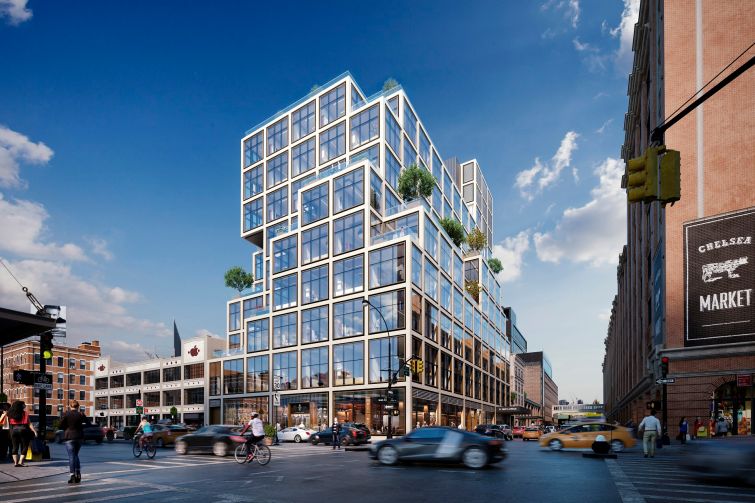Manhattan Office Leasing Activity Drops by a Third: Report
By Rebecca Baird-Remba July 13, 2017 12:40 am
reprints
Despite a couple of large recent leases and a solid first quarter, the Manhattan office market is limping along.
Activity declined by a third between April and June compared with same period last year, according to a new second-quarter report from commercial brokerage Avison Young provided first to Commercial Observer. In the second quarter, the pace of office leasing, determined by the number of leases signed, dropped 32 percent, and leasing activity for the first half of the year dipped 14 percent, the report indicates.
Office leasing in Manhattan’s major office corridors slowed quite a bit, with Midtown taking the biggest hit in terms of square footage leased.
The amount of square footage leased in the second quarter dropped 35 percent year-over-year, with 3.2 million square feet snapped up in the second quarter versus 5 million square feet between April and June 2016. Leasing volume for the first half of this year also decreased, dipping 23 percent to 7.7 million square feet from 10 million in the first half of 2016. Eight leases of more than 100,000 square feet were inked in the second quarter, and two of those deals—law firm Cooley LLP and wealth management company JPMC Digital—were done at Hudson Yards. The vacancy rate in Midtown was only up slightly year-over-year, to 11 percent from 10 percent.
The action-packed first quarter included lots of big deals, like the closing of Blackrock’s 847,000-square-foot lease at Hudson Yards. Roughly 8.4 million square feet of office space was rented across Manhattan, but the second quarter, by comparison, saw 5 million square feet leased. Avison Young senior research director Marisha Clinton said the first-quarter rush was typical after an election.
“It’s a trend that happens with every election year,” she said. “There’s uncertainty from tenants after the election [while they wait to see if financial regulations will change and shift the markets] and then they execute more leases in the first quarter.”
Savills Studley found extremely similar trends in office leasing across Manhattan in the second quarter.
“Our brokers are saying that demand is pretty spotty and tepid,” said Keith DeCoster, the director of real estate analytics at Savills Studley. “So we don’t see a big jump in activity in Midtown in the near future.” Based on what’s happened so far, 2017 is set to be the third straight year with less than 30 million square feet of commercial leasing, unless there’s a “big resurgence in leasing or a lot of renewals.” Office leasing hit a peak in 2014, when it surpassed 30 million square feet.
Meanwhile, average asking rents went up slightly since the second quarter of 2016, both in Midtown and across Manhattan in general, Avison Young and Savills Studley found.
The borough-wide average ticked up to $79 a square foot from $76 in the second quarter of last year, per the Avison Young data. Similarly, the Midtown average increased to $86 from $83 a square foot over the same period. That’s because huge blocks of high-priced space are available, DeCoster said, and there isn’t a lot of cheaper inventory at the middle and low end of the market. For example, the Plaza District, which is Midtown’s priciest area with average office rents clocking in at $103 a square foot, has some sizable chunks of office space on the market. The largest available property is the entire 37-story former Sony building at 550 Madison Avenue, which has 853,000 square feet up for grabs, according to Avison Young. Chetrit Group and Clipper Equity unloaded the property for $1.4 billion last year to Olayan America, the American arm of Saudi conglomerate Olayan Group.
The Avison Young report painted a similar picture of leasing activity in Lower Manhattan. As in Midtown, Downtown office leasing volume sunk 35 percent year-over-year for the second quarter. On the other hand, the first half of the year saw a 7 percent increase in office leasing, with 3.7 million square feet signed versus 3.5 million in the first six months of 2016. The vacancy rate shot up to 12 percent from 10 percent year-over-year, even as asking rents grew to $65 from $60.
Midtown South provides a glimmer of optimism. Vacancies went up to 7 percent in the second quarter from 6 percent at the same time the year before, but the overall vacancy rate remained the lowest in the borough. The Department of Citywide Administrative Services renewed a 350,000-square-foot lease near Union Square, as Commercial Observer previously reported, and Aetna inked a deal for 150,000 square feet in a new Vornado Realty Trust (VNO)-developed building in Chelsea.
But not everyone agrees that the office market has taken a dive.
“Our numbers are not showing that at all,” said Richard Persichetti, the regional research director at Cushman & Wakefield (CWK). Second-quarter Manhattan office leasing activity climbed 13 percent year-over-year, he said, and in Midtown, leasing went up 11 percent compared with the second quarter of last year. He acknowledged that vacancy was up across the board, but said that otherwise, the market is humming along quite nicely.
Matt Astrachan, a vice chairman at JLL (JLL), agreed with C&W’s rosy assessment.
“Some landlords are reaching deeper in some parts of town in terms of concessions,” he conceded, “but overall the market is healthy.” He shot down what he termed Avison Young’s “draconian view” of the market, arguing: “The robust amount of activity we saw in the first half of the year—is that sustainable in perpetuity? Probably not. But I don’t think the falloff is going to be that dramatic.”


